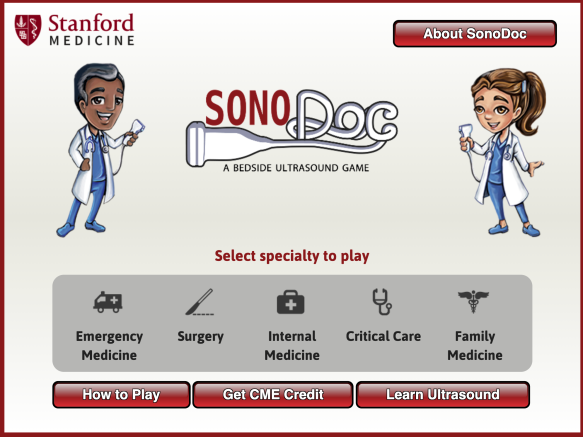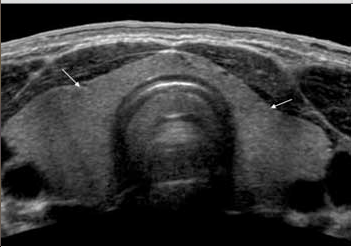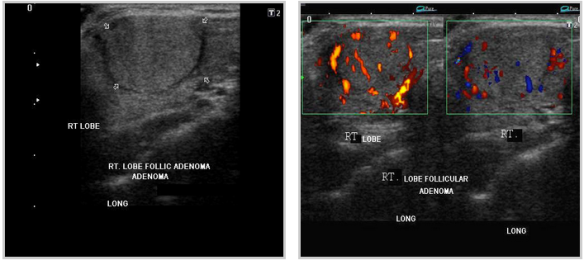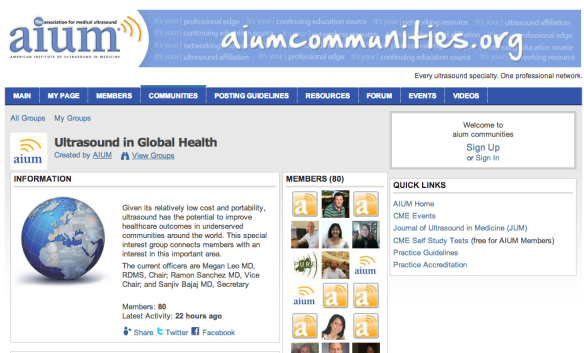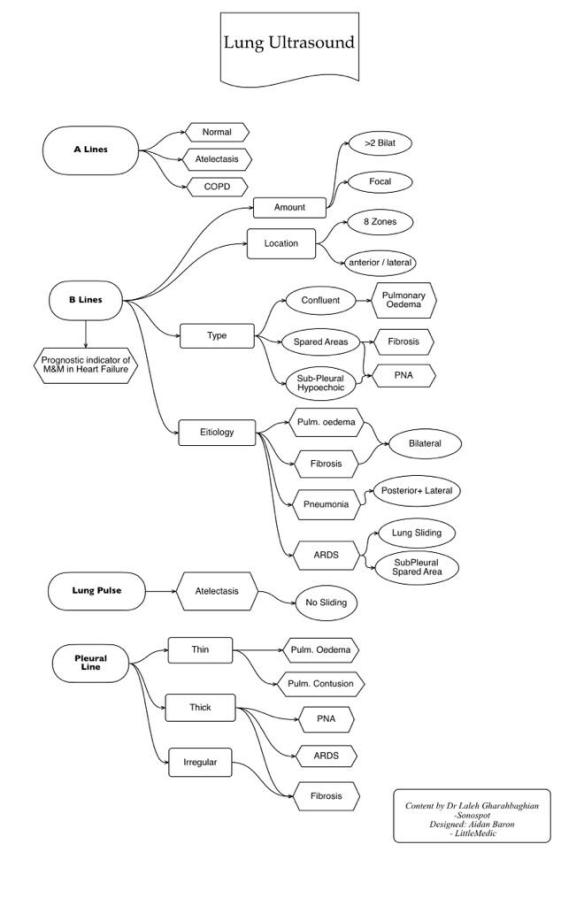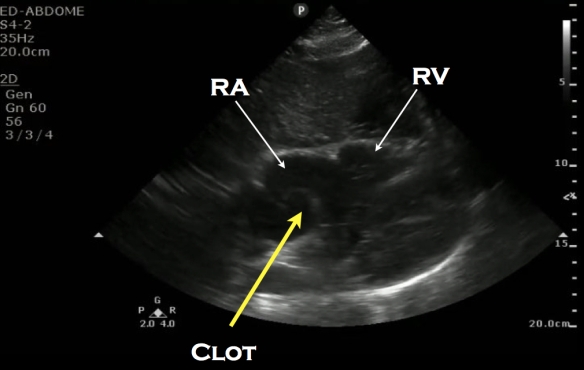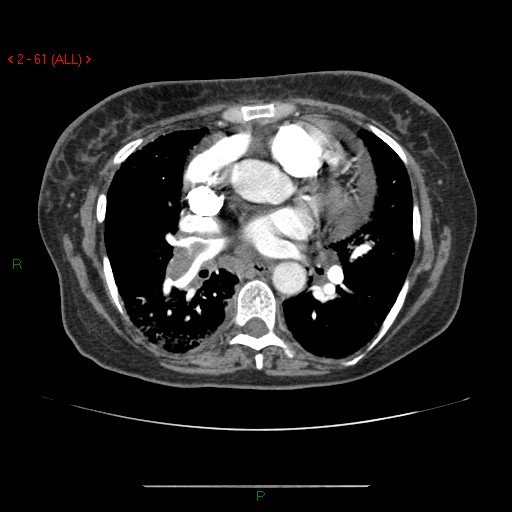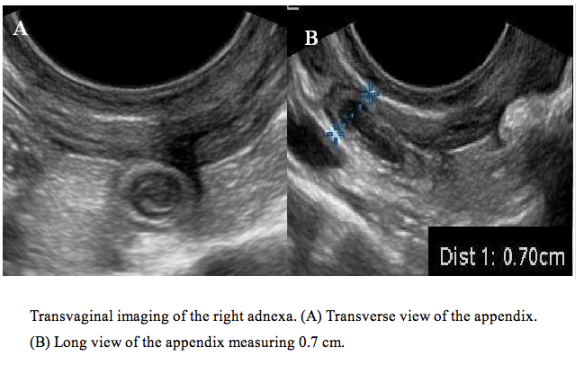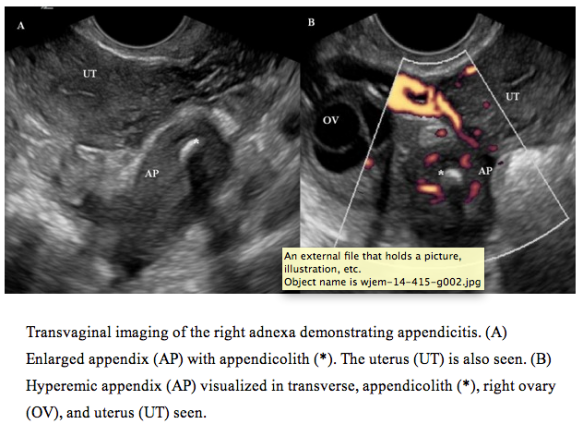Update: ACEP has written guidelines as of June 2018 – find it here
In an official statement by the American Institute of Ultrasound in Medicine (AIUM), they updated their guidelines on cleaning probes: Read below:
“The purpose of this document is to provide guidance regarding the cleaning and preparation of external and internal ultrasound probes. Some manufacturers use the term “transducers” or “imaging arrays.”
Medical instruments fall into different categories with respect to their potential for pathogen transmission. The most critical instruments are those that are intended to penetrate skin or mucous membranes. These require sterilization. Less critical instruments (often called “semicritical” instruments) that simply come into contact with mucous membranes, such as fiber-optic endoscopes, require high-level disinfection rather than sterilization. “Noncritical” devices come into contact with intact skin but not mucous membranes.
External probes that only come into contact with clean, intact skin are considered noncritical devices and require cleaning after every use as described below.
All internal probes should be covered with a single-use barrier. If condoms are used as barriers, they should be nonlubricated and nonmedicated. Although internal ultrasound probes are routinely protected by single-use disposable probe covers, leakage rates of 0.9% to 2% for condoms and 8% to 81% for commercial probe covers have been observed in recent studies (Rutala and Weber, 2011). These probes are therefore classified as semicritical devices.
Note: Practitioners should be aware that condoms have been shown to be less prone to leakage than commercial probe covers and have a 6-fold enhanced acceptable quality level (AQL) when compared to standard examination gloves. They have an AQL equal to that of surgical gloves. Users should be aware of latex sensitivity issues and have non-latex-containing barriers available.
For maximum safety, one should therefore perform high-level disinfection of the probe between each use and use a probe cover or condom as an aid to keep the probe clean. For the purpose of this document, “internal probes” refer to all vaginal, rectal, and transesophageal probes, as well as intraoperative probes and all probes that are in contact with bodily fluids/blood or have a remote chance to be in contact with dry/cracked skin and body fluids, including blood.
Definitions
All cleaning, disinfection, and sterilization represent a statistical reduction in the number of microbes present on a surface rather than their complete elimination. Meticulous cleaning of the instrument is the key to an initial reduction of the microbial/organic load by at least 99%. This cleaning is followed by a disinfecting procedure to ensure a high degree of protection from infectious disease transmission, even if a disposable barrier covers the instrument during use.
According to the Centers for Disease Control and Prevention (CDC) “Guideline for Disinfection and Sterilization in Healthcare Facilities” (2008):
“Cleaning is the removal of visible soil (eg, organic and inorganic material) from objects and surfaces and normally is accomplished manually or mechanically using water with detergents or enzymatic products. Thorough cleaning is essential before high-level disinfection and sterilization because inorganic and organic material that remains on the surfaces of instruments interfere with the effectiveness of these processes.”
“Disinfection describes a process that eliminates many or all pathogenic microorganisms, except bacterial spores.”
Low-Level Disinfection—Destruction of most bacteria, some viruses, and some fungi. Low-level disinfection will not necessarily inactivate Mycobacterium tuberculosis or bacterial spores.
Mid-Level Disinfection—Inactivation of M Tuberculosis, bacteria, most viruses, most fungi, and some bacterial spores.
High-Level Disinfection—Destruction/removal of all microorganisms except bacterial spores.
“Sterilization describes a process that destroys or eliminates all forms of microbial life and is carried out in healthcare facilities by physical or chemical methods. Steam under pressure, dry heat, ethylene oxide (EtO) gas, hydrogen peroxide gas plasma, and liquid chemicals are the principal sterilizing agents used in health-care facilities. . . . When chemicals are used to destroy all forms of microbiologic life, they can be called chemical sterilants. These same germicides used for shorter exposure periods also can be part of the disinfection process (ie, high-level disinfection).”
The following specific recommendations are made for the cleaning and preparation of all ultrasound probes. Users should also review the CDC document on sterilization and disinfection of medical devices to be certain that their procedures conform to the CDC principles for disinfection of patient care equipment.
1. Cleaning—Transducers should be cleaned after each examination with soap and water or quaternary ammonium (a low-level disinfectant) sprays or wipes. The probes must be disconnected from the ultrasound scanner for anything more than wiping or spray cleaning. After removal of the probe cover (when applicable), use running water to remove any residual gel or debris from the probe. Use a damp gauze pad or other soft cloth and a small amount of mild nonabrasive liquid soap (household dish-washing liquid is ideal) to thoroughly cleanse the probe. Consider the use of a small brush, especially for crevices and areas of angulation, depending on the design of the particular probe. Rinse the probe thoroughly with running water, and then dry the probe with a soft cloth or paper towel.
2. Disinfection—As noted above, all internal probes (eg, vaginal, rectal, and transesophageal probes) as well as intraoperative probes require high-level disinfection before they can be used on another patient.
For the protection of the patient and the health care worker, all internal examinations should be performed with the operator properly gloved throughout the procedure. As the probe cover is removed, care should be taken not to contaminate the probe with secretions from the patient. At the completion of the procedure, hands should be thoroughly washed with soap and water. Gloves should be used to remove the probe cover and to clean the probe as described above.
Note: An obvious disruption in condom integrity does not require modification of this protocol. Because of the potential disruption of the barrier sheath, high-level disinfection with chemical agents is necessary. The following guidelines take into account possible probe contamination due to a disruption in the barrier sheath.
After removal of the probe cover, clean the transducer as described above. Cleaning with a detergent/water solution as described above is important as the first step in proper disinfection, since chemical disinfectants act more rapidly on clean and dry surfaces. Wet surfaces dilute the disinfectant.
High-level liquid disinfection is required to ensure further statistical reduction in the microbial load. Examples of such high-level disinfectants are listed in Table 1. A complete list of US Food and Drug Administration (FDA)-cleared liquid sterilants and high-level disinfectants is available at http://www.fda.gov/MedicalDevices/Safety/AlertsandNotices/ucm194429.htm, and other agents are under investigation.
To achieve high-level disinfection, the practice must meet or exceed the listed “High-Level Disinfectant Contact Conditions” specified for each product. Users should be aware that not all approved disinfectants on this list are safe for all ultrasound probes.
The CDC recommends environmental infection control in the case of Clostridium difficile, consisting of “meticulous cleaning followed by disinfection using hypochlorite-based germicides as appropriate” (CDC, 2008). The current introduction and initial marketing of a hydrogen peroxide nanodroplet emulsion might provide an effective high-level disinfectant without toxicity.
Table 1. Sterilants and High-Level Disinfectants Listed by the FDA
| Name |
Composition/Action |
| Glutaraldehyde |
Organic compound (CH2(CH2CHO)2)
Induces cell death by cross-linking cellular proteins; usually used alone or mixed with formaldehyde |
| Hydrogen peroxide |
Inorganic compound (H2O2)
Antiseptic and antibacterial; a very strong oxidizer with oxidation potential of 1.8 V |
| Peracetic acid |
Organic compound (CH3CO3H)
Antimicrobial agent (high oxidization potential) |
| Ortho-Phthalaldehyde |
Organic compound (C6H4(CHO)2)
strong binding to outer cell wall of contaminant organisms |
| Hypochlorite/hypochlorous acid |
inorganic compound (HClO)
Myeloperoxidase-mediated peroxidation of chloride ions |
| Phenol/phenolate |
Organic compound (C6H5OH)
Antiseptic |
| Hibidil |
Chlorhexidine gluconate (C22H30Cl2N10)
Chemical antiseptic |
The Occupational Safety and Health Administration as well as the Joint Commission (Environment of Care Standard IC 02.02.01 EP 9) have issued guidelines for exposure to chemical agents, which might be used for ultrasound probe cleaning. Before selecting a high-level disinfectant, users should request the Material Safety Data Sheet for the product and make sure that their facility is able to meet the necessary conditions to minimize exposure (via inhalation, ingestion, or contact through skin/eyes) to potentially dangerous substances. Proper ventilation, a positive-pressure local environment, and the use of personal protective devices (eg, gloves and face/eye protection) may be required.
Immersion of probes in fluids requires attention to the individual device’s ability to be submerged. Although some scan heads as well as large portions of the cable may safely be immersed up to the connector to the ultrasound scanner, only the scan heads of others may be submerged. Some manufacturers also note that the crystals of the array may be damaged if, instead of suspending the probe in the disinfectant, it rests on the bottom of the container. Before selecting a method of disinfection, consult the instrument manufacturer regarding the compatibility of the to-be-used agent with the probes. Relevant information is available online and in device manuals. Additionally, not all probes can be cleaned with the same cleaning agents. Although some agents are compatible with all probes of a given manufacturer, others must be limited to a subset of probes.
After soaking the probe in an approved disinfectant for the specified time, the probe should be thoroughly rinsed (especially to remove traces of toxic disinfectants in the case of ortho-phthalaldehyde) and dried.
Summary
Adequate probe preparation is mandatory. The level of preparation depends on the type of examination performed. Routine high-level disinfection of internal probes between patients is mandatory, plus the use of a high-quality single-use probe cover during each examination is required to properly protect patients from infection. It would be reassuring for the user to be able to consult manufacturer’s instructions, particularly those that have been validated by the manufacturer for sterilizing devices. Preparation of external probes between patients is less critical and reduced to a low-level disinfection process. For all chemical disinfectants, precautions must be taken to protect workers and patients from the toxicity of the disinfectant.
The AIUM does not endorse or promote any specific commercial products. It is the responsibility of each entity to follow the manufacturer’s guidelines, law, and regulations.
Suggested Reading
- Amis S, Ruddy M, Kibbler CC, Economides DL, MacLean AB. Assessment of condoms as probe covers for transvaginal sonography. J Clin Ultrasound 2000; 28:295-298.
- Bloc S, Garnier T, Bounhiol C, et al. Ultrasound-Guided Regional Anaesthesia: An Effective Method for Cleaning the Probes. Quincy-Sous-Sénart, France: Service d’Anesthésie, Hôpital Privé Claude-Galien; 2010.
- Centers for Disease Control and Prevention, Hospital Infections Program. National Nosocomial Infections Surveillance (NNIS) report, data summary from October 1986-April 1996: a report from the NNIS system. Am J Infect Control 1996; 24:380-388.
- Frazee BW, Fahimi J, Lambert L, Nagdev A. Emergency department ultrasonographic probe contamination and experimental model of probe disinfection. Ann Emerg Med 2011; 58:56-63.
- Hignett M, Claman P. High rates of perforation are found in endovaginal ultrasound probe covers before and after oocyte retrieval for in vitro fertilization-embryo transfer. J Assist Reprod Genet 1995; 12:606-609.
- Kac G, Podglajen I, Si-Mohamed A, Rodi A, Grataloup C, Meyer G. Evaluation of Ultraviolet C for Disinfection of Endocavitary Ultrasound Transducers Persistently Contaminated Despite Probe Covers. Paris, France: Hygiène Hospitalière; 2010
- Koibuchi H, Fujii Y, Kotani K, et al. Degradation of ultrasound probes caused by disinfection with alcohol. J Med Ultrason 2011; 38:97-100.
- Milki AA, Fisch JD. Vaginal ultrasound probe cover leakage: implications for patient care. Fertil Steril 1998; 69:409-411.
- Mirza WA, Imam SH, Kharal MS, et al. Cleaning methods for ultrasound probes. J Coll Physicians Surg Pak 2008; 18:286-289.
- Muradali D, Gold WL, Phillips A, Wilson S. Can ultrasound probes and coupling gel be a source of nosocomial infection in patients undergoing sonography? An in vivo and in vitro study. AJR Am J Roentgenol 1995; 164:1521-1524.
- Rooks VJ, Yancey MK, Elg SA, Brueske L. Comparison of probe sheaths for endovaginal sonography. Obstet Gynecol 1996; 87:27-29.
- Rutala WA, Weber DJ. Sterilization, high-level disinfection, and environmental cleaning. Infect Dis Clin North Am 2011; 25:45-76.
- Whitehead EJ, Thompson JF, Lewis DR. Contamination and decontamination of Doppler probes. Ann R Coll Surg Engl 2006; 88:479-481.
Related Websites
- US Food and Drug Administration. Cleared liquid chemical sterilants/high-level disinfectants US FDA website; March 03, 2010. http://www.fda.gov/MedicalDevices/Safety/AlertsandNotices/ucm194429.htm.
- Centers for Disease Control and Prevention. Guideline for disinfection and sterilization in healthcare facilities, 2008. Centers for Disease Control and Prevention website; 2008. http://www.cdc.gov/hicpac/pdf/guidelines/Disinfection_Nov_2008.pdf.
- Occupational Safety and Health Administration. Hospital eTool: clinical services. Occupational Safety and Health Administration website. http://www.osha.gov/SLTC/etools/hospital/clinical/pt/pt.html.
